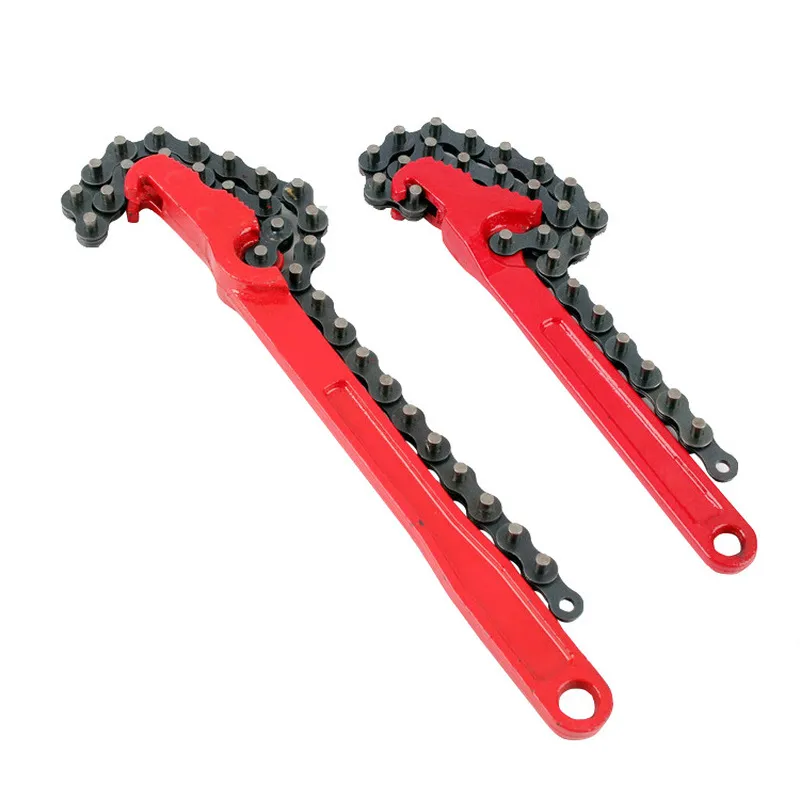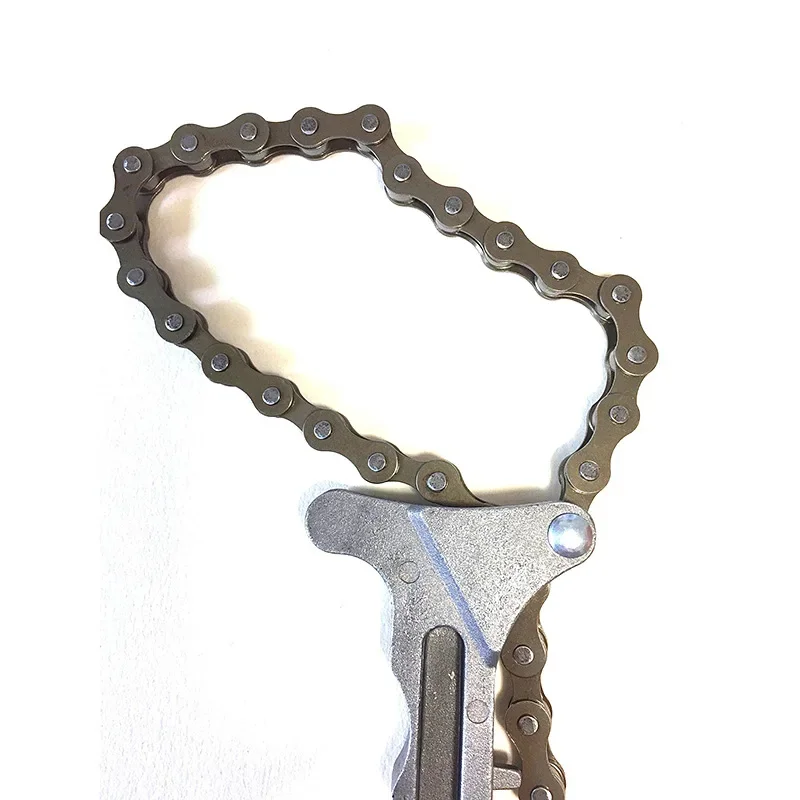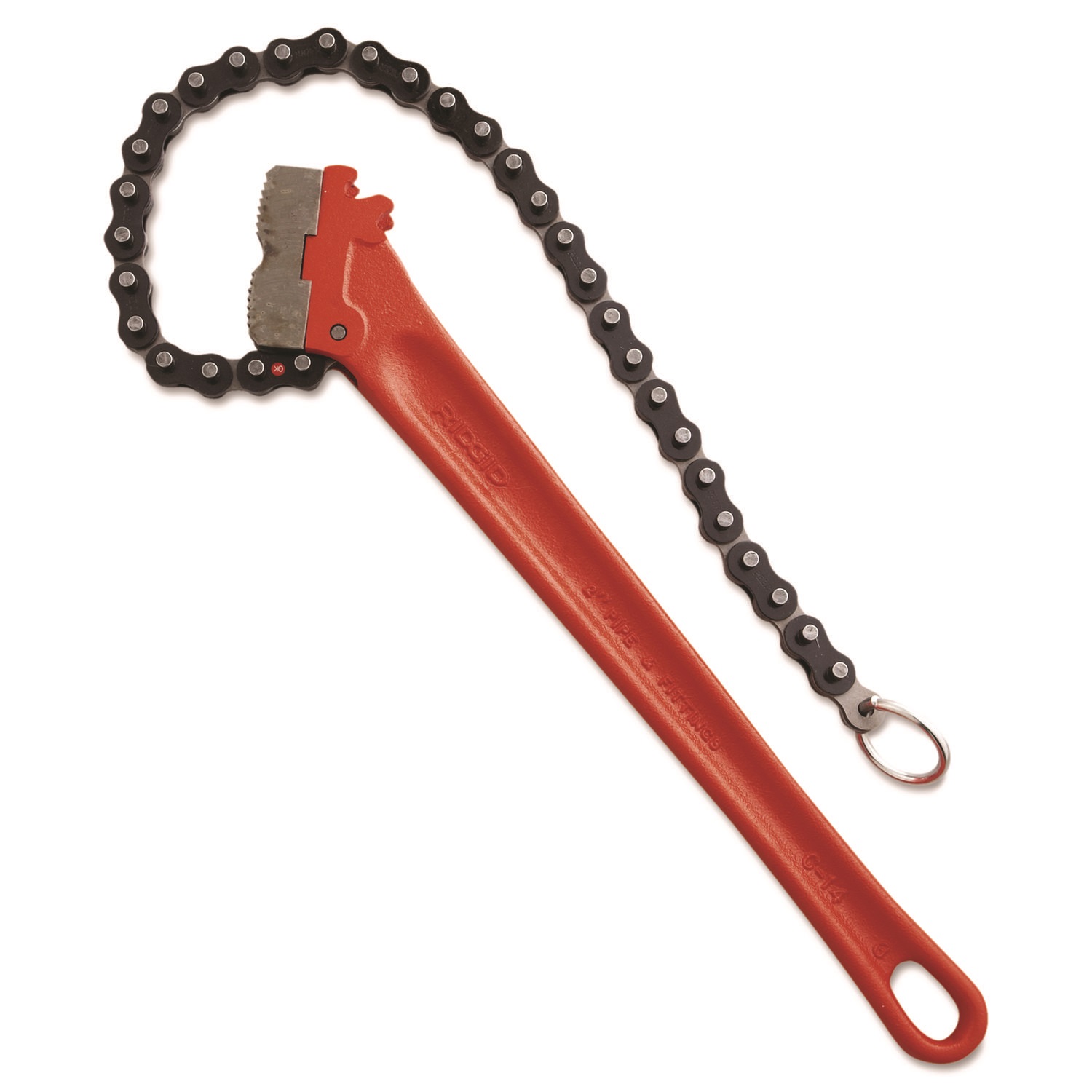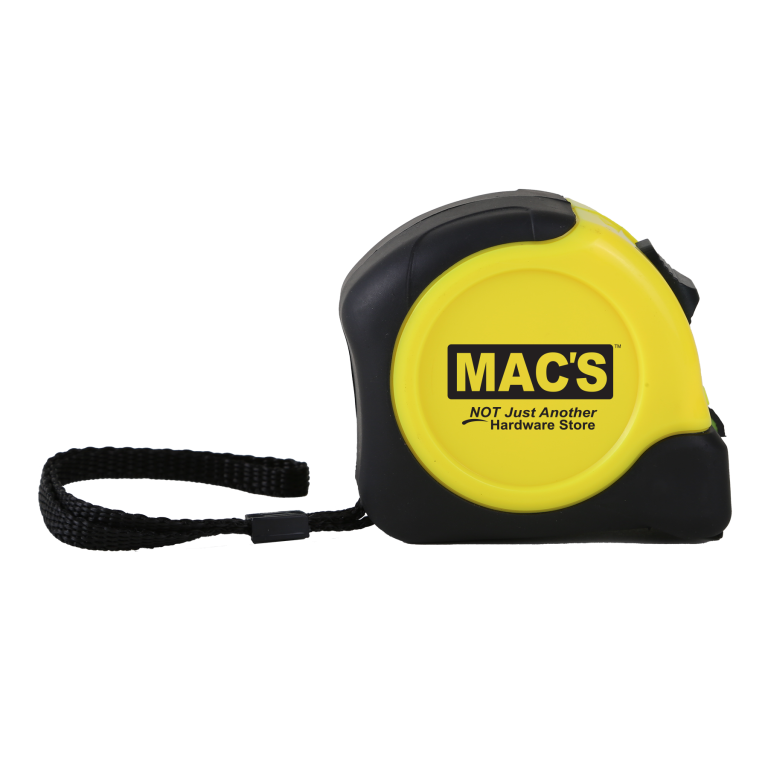
Chain Wrench: Uses and Best Practices for Every Mechanic
In the world of mechanical tools, each item serves a specific purpose, making it essential for professionals and DIY enthusiasts alike to understand their options. One such indispensable tool is the chain wrench. Known for its unique design and powerful grip, the chain wrench is especially valuable for tasks involving cylindrical objects, such as pipes and valves.
 What is a Chain Wrench?
What is a Chain Wrench?
Definition and Purpose of a Chain Wrench
A chain wrench is a specialized tool used for gripping and turning objects. It has a chain attached to a handle, which wraps around objects to provide a strong grip. This tool is particularly useful for working with round or oddly-shaped objects, such as pipes and cylindrical fittings. The chain ensures a secure hold, making rotations more effective. Chain wrenches are valued for their ability to handle tasks requiring high torque.
Common Applications in Various Industries
Chain wrenches are used across a range of industries due to their adaptability. In plumbing, they aid in tightening or loosening pipes and fittings. Mechanics often use them to manipulate engine parts or pipe connections securely. Oil and gas workers use chain wrenches to deal with large, heavy-duty pipes. Additionally, they are useful for maintenance and repairs in industrial settings, offering precise control in gripping and rotating materials. Their versatility makes them essential in both professional and home setups.
Types
Understanding different types of chain wrenches helps you select the right tool. Each type has specific features designed for distinct tasks, making them versatile for varied applications.
Standard Chain Wrench
A standard chain wrench is a basic, reliable tool for handling common tasks. It features a robust chain attached to a fixed jaw. This design makes it suitable for gripping and turning pipes, bolts, and other round objects. It is widely used in plumbing and maintenance work for its simplicity and ease of use.
Adjustable Chain Wrench
An adjustable chain wrench offers more flexibility compared to the standard version. Its adjustable jaw allows it to handle objects of various sizes. This makes it ideal for professionals who work with different types of pipes or fittings. The adjustable design ensures a snug, secure grip, reducing the risk of slippage during use.
Heavy-Duty Chain Wrench
Heavy-duty chain wrenches are built for demanding, industrial applications. They feature a reinforced design and sturdy materials, making them capable of handling high torque tasks. These tools are commonly found in industries like oil and gas, where large, heavy pipes require extra strength. Their durability ensures consistent performance even under extreme stress.
 Tools and Materials Needed
Tools and Materials Needed
Using a chain wrench properly requires preparation. Having the right tools and materials ensures safety and efficiency.
Essential Tools to Accompany a Chain Wrench
- Pipe Vise or Clamp: These tools secure the object being worked on, providing stability during use.
- Lubricating Oil: Use oil to ease rotation and reduce wear on the chain wrench.
- Protective Cloth: A cloth protects the surface of delicate materials from scratches or damage.
- Torque Measurement Tool: This helps ensure you don’t apply excessive force that could damage the object.
- Work Gloves: Gloves improve grip and protect your hands from injury during handling.
- Safety Glasses: These provide protection from debris or unexpected splashes in the work area.
Having these tools nearby will make the process safer and smoother while using a chain wrench.
Tips for Selecting the Right Chain Wrench
- Object Size: Choose a chain wrench with a jaw size suitable for the objects you’ll handle.
- Material Quality: Opt for durable materials like reinforced steel for tough, high-torque tasks.
- Adjustable Options: Pick adjustable chain wrenches for versatility across varying object sizes.
- Purpose: Match the wrench type to the task—standard for light work, heavy-duty for industrial tasks.
- Grip Strength: Ensure the chain provides a firm grip to prevent slippage during use.
- Brand Reputation: Select brands known for reliability and quality craftsmanship.
By choosing the right chain wrench and supporting tools, you’ll enhance both safety and efficiency in your projects.
 Step-by-Step Guide
Step-by-Step Guide
Using a chain wrench safely requires proper preparation and attention to detail. Following these steps helps ensure efficiency and minimizes risks during the process.
Preparing the Work Area
- Clear the Workspace: Remove clutter and debris from the work area to create a safe environment.
- Inspect the Tools: Check the chain wrench and accompanying tools for any signs of damage or wear.
- Gather Necessary Supplies: Have all required tools, such as clamps, gloves, and protective cloth, within reach.
- Ensure Lighting: Set up adequate lighting to clearly see the objects being worked on.
- Wear Protective Gear: Put on safety glasses and gloves to protect yourself from injury.
Securing the Chain Wrench on the Object
- Position the Object: Stabilize the object using a pipe vise or clamp for added security.
- Wrap the Chain: Wrap the chain around the object, ensuring it is snug and firmly secured.
- Align the Handle: Ensure the handle is positioned for easy and safe rotation.
- Test the Grip: Tug gently to confirm the chain is gripping the object securely.
Applying Proper Torque and Pressure
- Apply Steady Force: Rotate the handle evenly without sudden jerks or excessive pressure.
- Monitor the Object: Check for signs of distortion or damage as you apply torque.
- Use a Torque Tool: If needed, measure applied torque to prevent over-tightening or loosening.
Removing the Chain Wrench Safely
- Release Tension: Loosen the chain gently without sudden movements.
- Unwrap the Chain: Carefully remove the chain from the object to avoid scratches or damage.
- Inspect the Object: Verify the object is undamaged and securely tightened or loosened as intended.
- Store Tools Properly: Clean the chain wrench and store it in a safe, dry location.
Following these steps ensures that you use a chain wrench effectively and safely in your projects.
Safety Tips
Ensuring safety while using a chain wrench is crucial. Following proper guidelines minimizes risks and improves effectiveness.
Avoiding Common Mistakes
- Using Excessive Force: Apply steady, moderate pressure to avoid damaging the object and the wrench.
- Improper Object Stabilization: Always secure the object with a vise or clamp before using the chain wrench.
- Ignoring Regular Inspections: Check the chain wrench for wear, rust, or damage before each use.
- Wrong Chain Placement: Ensure the chain wraps snugly and evenly for a secure grip.
- Skipping Protective Measures: Always wear appropriate safety gear to reduce the risk of injury.
- Over-Tightening or Loosening: Monitor the object for potential stress or distortion when applying torque.
Protective Gear to Use While Working
- Work Gloves: Protect your hands while improving your grip on the wrench.
- Safety Glasses: Shield your eyes from debris or accidental splashes.
- Sturdy Footwear: Avoid accidents by wearing shoes with good grip and tough protection.
- Long-Sleeve Clothing: Prevent cuts or abrasions during high-torque operations.
- Hearing Protection: For noisy environments, use ear protection to safeguard your hearing.
Maintenance Tips to Ensure Safe Usage
- Clean After Use: Remove dirt, grease, or residue from the chain wrench after each task.
- Lubricate Regularly: Apply oil to the chain to maintain flexibility and prevent rust.
- Inspect Tightening Mechanism: Ensure the chain and handle lock securely before every operation.
- Replace Worn Parts: Change damaged or overused components to avoid malfunctions.
- Store Properly: Keep the wrench in a clean, dry space to prevent deterioration.
By adopting these safety practices, you can handle any task confidently and effectively with a chain wrench.
 Key Benefits
Key Benefits
Chain wrenches offer unique advantages that make them valuable tools for a range of tasks. They combine precision, versatility, and durability, ensuring effective and efficient performance.
Precision and Control
Chain wrenches provide exceptional grip and control for various shapes and sizes of objects. The chain wraps securely around objects, ensuring a firm hold during rotation. This precision is especially useful for delicate materials or fittings that require careful handling. Mechanics and plumbers rely on this control to avoid over-tightening or damaging sensitive components. Additionally, with a chain wrench, adjusting torque becomes easier, enabling optimized performance.
Versatility in Applications
One of the biggest benefits of chain wrenches is their versatility. These tools are suitable for tasks ranging from loosening stubborn pipes to adjusting oddly-shaped objects. They work well across industries like plumbing, mechanics, oil and gas, and general maintenance. Whether you handle lightweight, standard pipes at home or industrial-grade equipment, chain wrenches adapt accordingly. Their ability to accommodate different object shapes and sizes makes them a go-to tool for professionals and DIY enthusiasts alike.
Durability and Long Lifespan
Chain wrenches are designed with durability in mind. Made from high-quality materials like reinforced steel, they withstand high torque and repeated use. Heavy-duty models can handle tough industrial tasks without damage. Proper maintenance, such as cleaning and lubrication, ensures these tools last for years. Investing in a durable chain wrench reduces the need for frequent replacements, saving both money and effort. Their reliability makes them an indispensable tool for long-term projects.
By offering precision, adaptability, and longevity, chain wrenches prove to be essential tools for various applications.
Troubleshooting Common Issues
Dealing with a Slipping Chain
Slipping chains can cause inefficiency and potential damage during use. Solve this issue with these steps:
- Inspect Chain Placement: Ensure the chain wraps snugly and evenly around the object.
- Check for Wear: Look for worn or damaged links on the chain that may affect grip.
- Clean the Chain: Remove dirt or grease that might reduce traction during operations.
- Lubricate Properly: Apply oil to reduce friction between the chain and the object.
- Stabilize the Object: Use a pipe vise or clamp to prevent movement while working.
- Replace Worn Chains: If the chain continues slipping, replace it with a new one.
Ensure regular maintenance to minimize chain slippage and maintain the tool’s effectiveness.
Addressing Material Damage or Wear
Damage or wear can compromise the tool and the object being worked on. Prevent this with these steps:
- Inspect Regularly: Check the wrench and chain for cracks, rust, or weakening links.
- Avoid Excessive Torque: Apply appropriate pressure to prevent overstressing the chain or objects.
- Use Protective Cloth: Wrap a cloth around delicate materials to avoid scratches.
- Replace Damaged Components: Swap out worn handles, chains, or other parts showing signs of deterioration.
- Store Properly: Keep the chain wrench in a clean, dry environment to avoid rust and damage.
- Follow Guidelines: Adhere to manufacturer instructions for safe and effective use.
Routine checks and timely replacements ensure safety and prolonged use of your chain wrench.
When to Replace Your Chain Wrench
Regularly inspect your chain wrench to determine if it needs replacement. Prolonged usage or poor maintenance can wear out the tool, affecting safety and performance. Knowing when to replace it ensures continued efficiency and avoids potential hazards.
Signs Your Chain Wrench is Worn Out
- Damaged Chain Links: Look for cracks, bends, or missing links that affect the tool’s grip.
- Rust or Corrosion: Excessive rust weakens the metal and reduces the wrench’s durability.
- Slipping Grip: If the wrench frequently slips despite proper adjustments, it may be worn out.
- Cracked Handle: Any visible cracks or fractures in the handle indicate reduced structural strength.
- Reduced Torque Performance: Struggling to apply sufficient torque is a clear sign of wear.
- Unreliable Locking Mechanism: If the chain doesn’t lock securely, the wrench should be replaced immediately.
Acting on these signs promptly can prevent accidents or damage during use.
Factors to Consider When Buying a New One
- Material Quality: Choose a wrench made from durable materials like reinforced steel for longevity.
- Size Range: Select a wrench suitable for the sizes of objects you handle most often.
- Type of Chain Wrench: Opt for standard, adjustable, or heavy-duty based on your specific needs.
- Grip Strength: Ensure the chain provides a firm, slip-resistant grip on materials.
- Brand Reputation: Buy from trusted brands known for quality and customer support.
- Ease of Maintenance: Look for features that simplify cleaning and lubrication.
Investing in the right replacement ensures safety, efficiency, and long-term value for your tasks.
 Conclusion
Conclusion
A chain wrench is a powerful and versatile tool that plays a vital role in various industries and DIY projects. Its unique design, offering a secure grip and remarkable flexibility, sets it apart from traditional wrenches, making it indispensable for tasks that require significant torque and control. By understanding the different types, benefits, and applications of chain wrenches, you can select the right tool to enhance your efficiency and effectiveness in handling a wide range of challenges. Additionally, following proper usage and maintenance practices ensures that your chain wrench remains reliable and durable, providing consistent performance when you need it most. Whether you’re a professional mechanic, a dedicated DIYer, or someone who enjoys tackling home improvement projects, incorporating a high-quality chain wrench into your toolkit is a smart and practical decision that will elevate your work and simplify your tasks.

